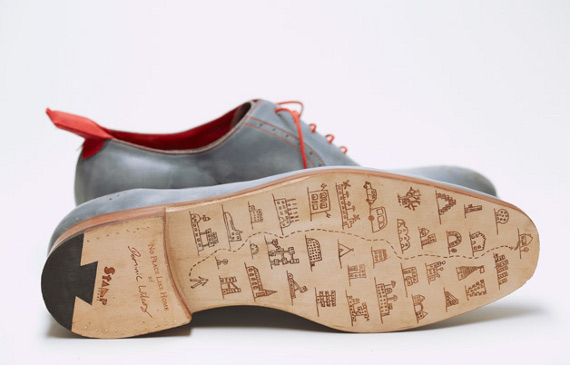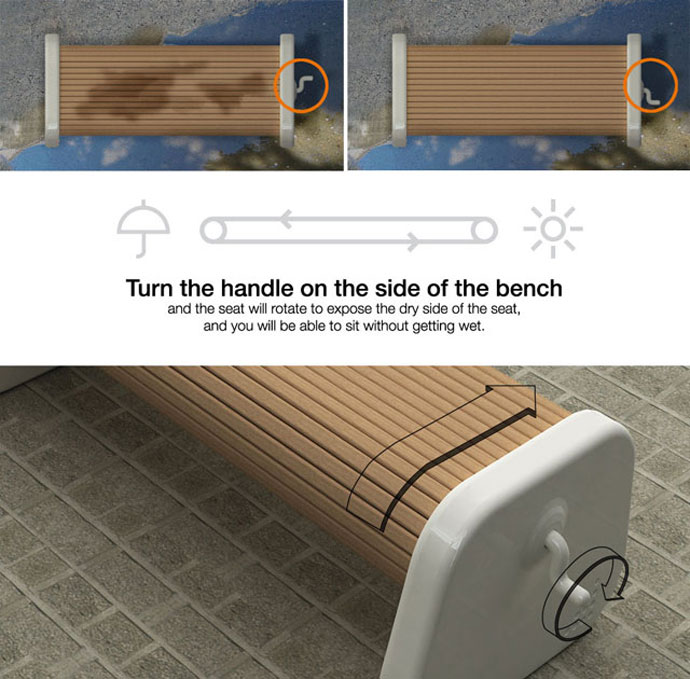It is the most environmentally-friendly way to get about, great exercise, sociable and free, and yet almost two thirds of us walk for less than one hour a week.
When asked why we walk so little, most cite lack of time, incorrect footwear and rain – concerns addressed by designers in a variety of novel ways.
Making a stand on behalf of walkers, is the designer of the rolling bench – a simple idea ideally suited to our rainy island. With the turn of a handle, the seating can be rotated so it’s always dry to sit on.
In response to those who say that walking takes to much time and requires the correct footwear, and inspired by the film The Wizard of Oz, designer Dominic Wilson has created a pair of GPS-enabled shoes he calls No Place Like Home.

The shoes are based on a traditional design and give little clue to the wizardry hidden within the sole and heel. Once a destination is uploaded to the shoes via a USB cable, a discreet array of tiny LED lights on the toe of the left shoe indicates the direction in which you need to head, and a similar display on the right toe shows the percentage of your journey that remains. The GPS antenna is hidden within a fabric tab at the back of the shoe.
Behind these novelty designs is a serious problem that is being inherited by our children. In the three years to 1991, the proportion of children under 10 walking to school in Britain was 62 per cent, but this has dropped to less than half. By contrast, the proportion of children travelling to school by car has increased to over 40 per cent – a change only partly explained by an average distance to school that has increased from 1.3 miles in 1995–97 to 1.6 miles in 2008.
The benefits of walking
- Scientists at the University of Pittsburgh have shown that by walking briskly for 30 to 60 minutes a day, it is possible for a person to lose weight without any alteration to their diet
- Regular walking helps to prevent peripheral artery disease and the bone disease osteoporosis
- Walking three to four times a week for 30 minutes has been shown to improve brain function and promotes a sense of well being
- Walking-friendly villages, towns and cities are more desirable places to visit and live

0 Comments View now